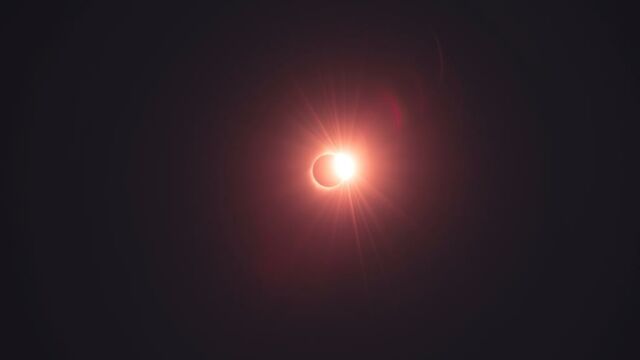The solar eclipse is an astronomical phenomenon that fascinates everyone, astronomy enthusiasts and average citizen alike. What is the reason for solar eclipses and how do they occur? We will explain this on the occasion of the annular solar eclipse on 10 June 2021.
Discover our latest podcast
What is a solar eclipse?
First, a definition of a solar eclipse: According to the definition given by NASA, a solar eclipse occurs when the Moon passes between the Sun and the Earth for a period of time.
When the Moon comes between the Earth and the Sun, our very own star casts a shadow onto the Earth's surface. A solar eclipse can only occur during the new moon phase. Depending on the alignment, several eclipses can occur: a total solar eclipse, a partial solar eclipse or an annular solar eclipse. This depends on several factors and we will explain them to you.
The Moon formed about 4.51 billion years ago and gradually mved away from the Earth (about 4 centimetres per year). Nowadays, the Moon is at a perfect distance to appear at the same size as the Sun, which allows it to mask out its circumference perfectly. However, this is still not the case.
How does a solar eclipse happen?
Obviously, a solar eclipse does not happen every time we get a new moon; surely you'd have noticed by now. All three celestial objects must be perfectly aligned for this astronomical phenomenon to occur. The eclipse of 10 June 2021 is an annular eclipse. However, there are several types of solar eclipses depending on the alignment between the Sun, Moon and Earth.
Here are the three different types of solar eclipse:
- Total solar eclipse: A total solar eclipse occurs when the Sun is completely obscured (hidden) by the Moon. It is a very rare and short-lived event (about 8 minutes, no more). Very often, the eclipse of the Sun is a natural astronomical phenomenon that is considered a must-see spectacle. However, you can only be witness it in a narrow band of darkness on the Earth's surface.
- Annular solar eclipse: An annular eclipse of the Sun occurs when the Moon is positioned between the Earth and the Sun so that the apparent diameter of the Moon is slightly smaller than the apparent diameter of the Sun. The Moon does not completely hide the Sun. A luminous ring of fire remains visible during the phase when the solar eclipse is at its maximum. Nevertheless, the solar corona is not visible during an annular eclipse, because of the additional light.
- Partial solar eclipse: A partial eclipse occurs when the Sun and Moon are not perfectly aligned. As a result, the Moon only partially obscures the Sun, in contrast to a total solar eclipse, which completely hides the Sun. In general, this phenomenon can be observed over a large part of the Earth, outside the darkened band of a total eclipse or an annular eclipse.
How to watch a solar eclipse?
Warning: Before you follow this advice, take care NEVER to look directly at the Sun with the naked eye. Otherwise, the intensity of the Sun's light will almost instantly cause permanent burns to the retina. Here are a few rules to follow to observe a solar eclipse safely.
NASA gives the do's and don'ts of eclipse viewing:
- It always bears repeating, do NOT look directly at the sun!
- Do not use homemade filters or ordinary sunglasses, even very dark ones. It is essential to use the right glasses to observe a solar eclipse.
- Use special solar filters, such as solar eclipse glasses, to observe the eclipse.
- Read and follow the instructions (on the manual) for the filters and supervise children if they want to watch the show.
- Regardless of the stage of the eclipse (partial, total or annular), do NOT look at the sun through a camera, telescope, binoculars or any other optical device, and never use solar filters with these devices. This is because the sun's rays will be focused on a single point and will severely damage your eyes and can cause serious eye injury.
- Inspect your solar eclipse glasses before use; if they are scratched or damaged, throw them away.
- If you do not have special eclipse glasses, opt for indirect viewing by projection. To do this, you can simply punch a pinhole in a piece of cardboard and place it facing the Sun.
When will the next annular solar eclipse take place?
The next solar eclipse will take place on 10 June 2021. The eclipse will begin at 10:12 am. The maximum of the solar eclipse will be at 11:41 and the end of the general eclipse is scheduled for 14:11. Part of Europe will be able to observe the annular solar eclipse in its partial phase. It will also be visible to countries in northwestern North America, the North Atlantic Ocean and northern Asia.
Who are the lucky ones? The edge of the solar disc more than 10% covered by the Moon will be visible from London. As a rule of thumb, the more Northern your house is, the more impressive this eclipse will be.















